

Breakfast, lunch and dinner were served buffet-style throughout our four days on-board and beverages available included thje Egyptian beers Sakara and Stella as well as local wines. Both wine and beers were rated as "good" or better and the food was considered very good by the travelers.
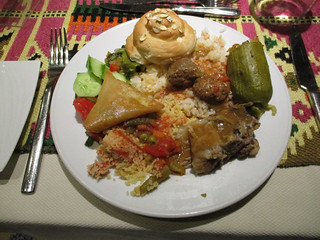
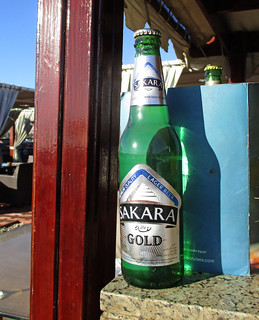
A few of us ventured out into the town on shopping missions after dinner. Luxor is no longer a small town and with some five million residents and a full-fledged bazaar nearby, there is no shortage of either souvenirs or forgotten necessities. This gave us a chance to see the temple lighted for the evening - a special treat that we would have otherwisde missed.

To review the geography, we were about four hundred miles to the South of Cairo. The first day was spent on the west side of the Nile at the Valley of the Kings and the next morning's outing would take us to the famed Karnak and Luxor Temples on the east side.

It has been ten years since our last visit to this area and the visitors center and signage has been greatly improved in that time.

Early the next morning, we headed into the modern visitors building and were treated to a large scale model of the temple complex for our initial orientation. The key word associated with this temple is "huge." The total enclosed area is 61 acres; the statues are big and plentiful; the obelisks are tall.
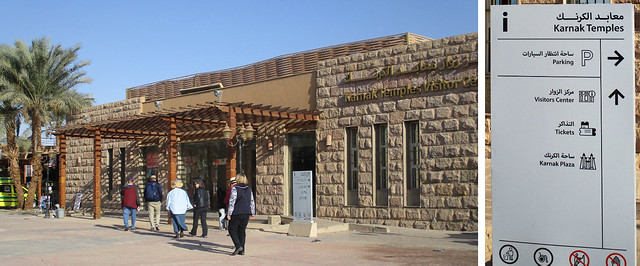

The Karnak temple complex is unusual in that it was constructed over a period of about two thousand years by a number of different pharaohs who kept adding sections for themselves and occasionally erasing their predecessor's inscriptions. Much of what remains could be classified as rubble and many statues are in poor condition. But there are a few real gems and the overwhelming scale makes this the most visited site in Egypt after the great pyramids at Giza.
In the courtyard beyond the first pylon (pylon = those tapered towers that form the gateways between sections of the temple) there are several rows of statues and one monster of a column. The backside of that first pylon also has a mud brick scaffolding part way up. In two thousand years there has not been enough rain to wash it away in this climate.



While many of the statues have suffered major damage and deterioration over the centuries, the entire temple complex has a great many very sharp looking inscriptions and drawings. For example, this stone tablet in between a pair of the ram sphinxes at the entrance.

The column in this next picture is the only one remaining of ten that lined the entrance to the second section of the temple. (For an artists depiction of all ten columns in what is believed to be the colonnade of Taharqa with the original colors, follow this link.)
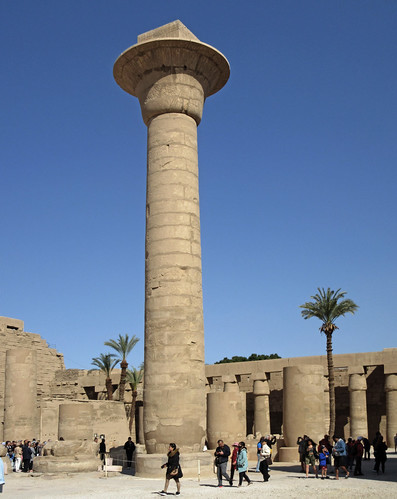
But when it comes to columns, it is the next area between the second and third pylons that any visitor will always remember. This is an area approximately the size of a football field and it is packed with 134 columns, each about ten feet in diameter.

The columns are loaded with nice crisp cartouches and other writing leading many visitors to take more than a few photos of the inscriptions.

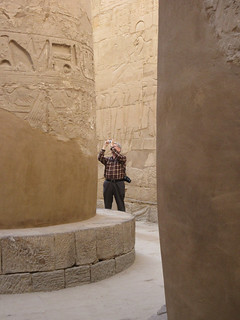
If this looks vaguely familiar to you, it is because this section of the temple turns up in a wide variety of popular culture from books and movies to electronic games. Our guide, Rashid, gave us a brief explanation of the hieroglyphic alphabet and its use in the name cartouches so that we might recognize at least a couple of the names.



The next segment of the temple, beyond the third pylon, features two large obelisks that are another popular feature. One is from a pair put in place by Thutmose III and the other is one of four originally placed by Queen Hatshepsut. These are the only two remaining from what were reportedly about a dozen at the site in ancient times.

A closer look at the tips of the two reveal differences and engravings.

The Thutmose obelisk on the left is the shorter of the two at about 75 feet tall and Hatshepsut's reaches 95 feet. The Hatshepsut obelisk was easier to photograph in its full length and you can click on the photo below for quite a bit more detail.

A sign in the area of the obelisks explains the color difference between the top and bottom of the obelisk:
Hatshepsut, faithful to the programme of her father, Thutmosis I, erected her obelisks ... "to pay homage to him, where he had decreed their installation". The sandstone blocks still surrounding the obelisk today are remnants of a casing that seems to have been built by Hatshepsut herself in order to support the roof of the hall ... Only the upper part of the obelisk protruding out of the roof was hammered out during the Amarna Period, and consequently re-engraved by Akhnaten's successors, tinting the top of the monolith yellow. The lower part, hidden behind the casing, was not damaged,





No comments:
Post a Comment